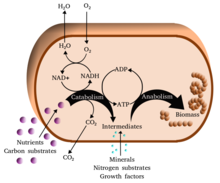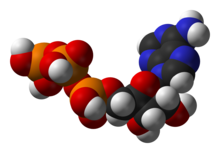**Metabolic Reactions and Pathways**:
– Metabolic reactions categorized as catabolic or anabolic.
– Chemical reactions organized into metabolic pathways facilitated by specific enzymes.
– Enzymes crucial for driving desirable reactions and regulating metabolic rates.
– Basal metabolic rate measures energy consumed by chemical reactions.
– Key biochemicals like amino acids, carbohydrates, nucleic acids, and lipids play essential roles in constructing cells and tissues or providing energy.
– Proteins made of amino acids vital for catalyzing metabolic reactions and other cellular functions.
**Macromolecules in Metabolism**:
– Lipids, including fatty acids, glycerol, and various lipid structures like sphingosine and phospholipids.
– Carbohydrates abundant in biological molecules, with roles in energy storage and structural components.
– Nucleotides, essential for genetic information storage, composed of phosphate, sugar group, and nitrogenous base.
– Coenzymes like ATP, crucial in transferring chemical energy between different reactions.
– Minerals and cofactors, including inorganic elements and metal cofactors, playing critical roles in metabolism.
**Energy Generation and Transformation**:
– Catabolism breaks down large molecules to provide energy and components for anabolic reactions.
– Digestion processes involving enzymes to break down macromolecules for cell metabolism.
– Energy sources from organic compounds like carbohydrates, fats, and amino acids.
– Nicotinamide Adenine Dinucleotide (NAD) and its role in metabolic reactions.
– Energy transformations like oxidative phosphorylation and energy production from inorganic compounds and light.
**Anabolism and Carbon Fixation**:
– Anabolism involves constructive metabolic processes using energy from catabolism to synthesize complex molecules.
– Carbon fixation processes like photosynthesis in plants, cyanobacteria, and algae.
– Different types of photosynthesis and carbon fixation mechanisms in prokaryotes.
– Fatty acids, isoprenoids, and sterol biosynthesis.
– Nucleotide synthesis, salvage pathways, and the high energy cost associated with de novo nucleotide synthesis.
**Specialized Metabolic Processes**:
– Xenobiotics detoxification by enzymes.
– Proteins synthesis from amino acids and unique sequences in peptide bonds.
– Energy sources from inorganic compounds and light in various organisms.
– Classification of organisms based on energy sources and metabolic activities.
– Importance of carbon fixation for the synthesis of organic compounds and sustaining life.
Metabolism (/məˈtæbəlɪzəm/, from Greek: μεταβολή metabolē, "change") is the set of life-sustaining chemical reactions in organisms. The three main functions of metabolism are: the conversion of the energy in food to energy available to run cellular processes; the conversion of food to building blocks of proteins, lipids, nucleic acids, and some carbohydrates; and the elimination of metabolic wastes. These enzyme-catalyzed reactions allow organisms to grow and reproduce, maintain their structures, and respond to their environments. The word metabolism can also refer to the sum of all chemical reactions that occur in living organisms, including digestion and the transportation of substances into and between different cells, in which case the above described set of reactions within the cells is called intermediary (or intermediate) metabolism.


Metabolic reactions may be categorized as catabolic – the breaking down of compounds (for example, of glucose to pyruvate by cellular respiration); or anabolic – the building up (synthesis) of compounds (such as proteins, carbohydrates, lipids, and nucleic acids). Usually, catabolism releases energy, and anabolism consumes energy.
The chemical reactions of metabolism are organized into metabolic pathways, in which one chemical is transformed through a series of steps into another chemical, each step being facilitated by a specific enzyme. Enzymes are crucial to metabolism because they allow organisms to drive desirable reactions that require energy and will not occur by themselves, by coupling them to spontaneous reactions that release energy. Enzymes act as catalysts – they allow a reaction to proceed more rapidly – and they also allow the regulation of the rate of a metabolic reaction, for example in response to changes in the cell's environment or to signals from other cells.
The metabolic system of a particular organism determines which substances it will find nutritious and which poisonous. For example, some prokaryotes use hydrogen sulfide as a nutrient, yet this gas is poisonous to animals. The basal metabolic rate of an organism is the measure of the amount of energy consumed by all of these chemical reactions.
A striking feature of metabolism is the similarity of the basic metabolic pathways among vastly different species. For example, the set of carboxylic acids that are best known as the intermediates in the citric acid cycle are present in all known organisms, being found in species as diverse as the unicellular bacterium Escherichia coli and huge multicellular organisms like elephants. These similarities in metabolic pathways are likely due to their early appearance in evolutionary history, and their retention is likely due to their efficacy. In various diseases, such as type II diabetes, metabolic syndrome, and cancer, normal metabolism is disrupted. The metabolism of cancer cells is also different from the metabolism of normal cells, and these differences can be used to find targets for therapeutic intervention in cancer.
